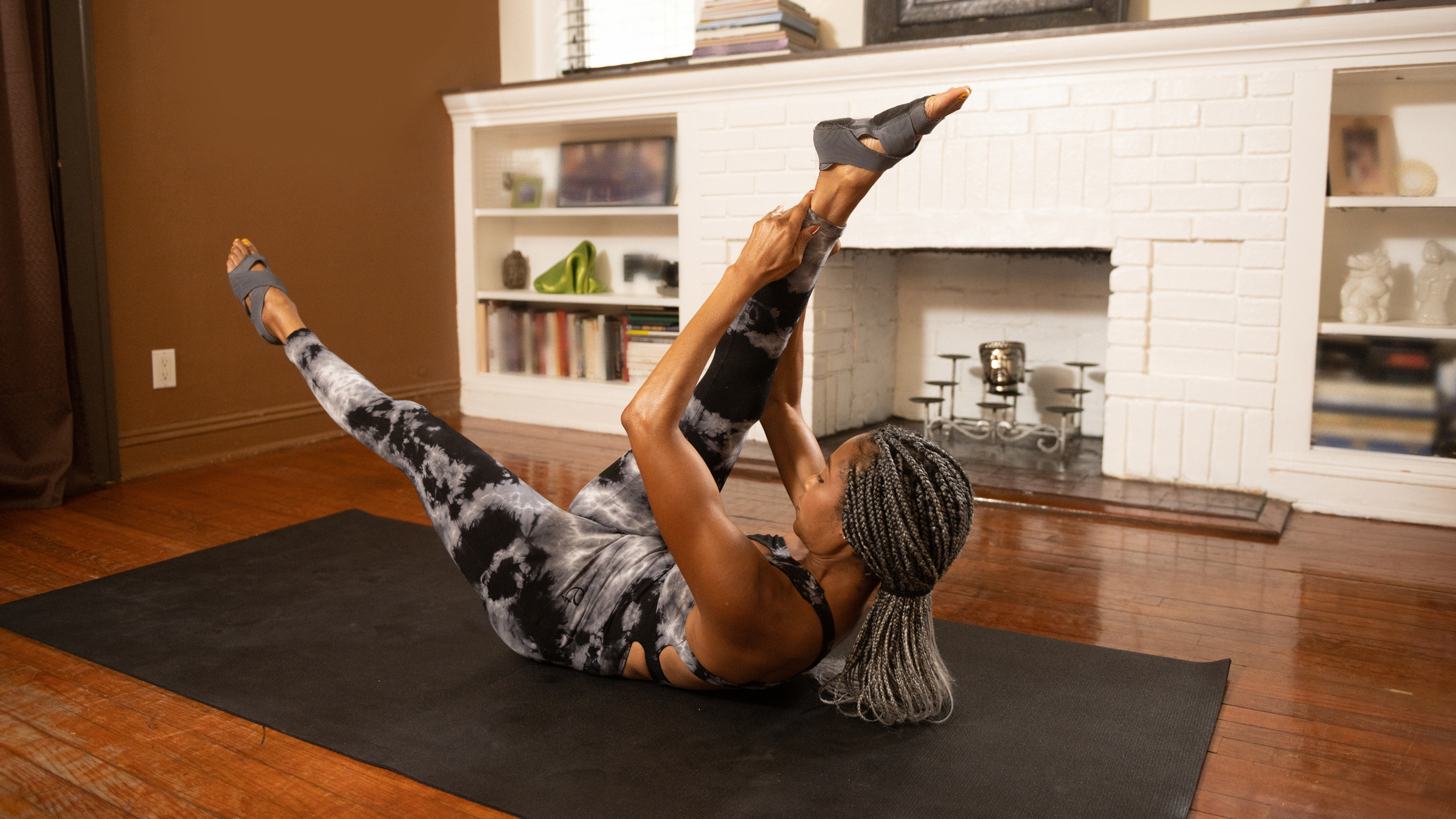This is the one Pilates exercise I can't get enough of—here's why
Pilates scissors works your abs, core and legs, plus it's fun

While some Pilates exercises feel like hard work, others feel more like fun. I find there's something about Pilates scissors—where you lie on your back and wave your legs in the air—that appeals to my sillier side, and yet it's a legitimate exercise that works your core, abs and legs.
"In scissors, your abdominals are working to hold the weight of your legs at the same time as holding your trunk in forward flexion," says Pilates instructor Millie Shiers, who teaches mat and reformer classes at Core LDN. "It strengthens both the upper and lower abs. The scissors move also improves hamstring flexibility."
I asked Shiers to explain how to do the Pilates scissors correctly, as well as talking me through the variations and modifications available.
How to do Pilates scissors
Video: Yuriy Kryvoshapka / Creatas Video+ / Getty Images Plus
- Lie on the mat with both legs extended straight up.
- Inhale and lift your head and chest, and bring your hands onto the back of your right calf.
- Keeping both legs straight throughout, exhale as you pull your right leg towards you while lowering your left leg.
- Return to the start under control, then inhale as you switch sides, placing your hands on your left calf.
Pilates scissors form tips
To get the most out of the scissors movement and properly connect to your muscles, make sure you are lifting with your abdominals and not your neck muscles. Think of sliding your ribs towards your hips. To make it harder, push your leg into your hands at the top of the move—that oppositional force will help switch your abdominals on, rather than just relying on your flexibility to bring your leg in.
Pilates scissors modifications
If the full scissors exercise is too hard and you're unable to maintain proper form, try this modified version. Begin in tabletop position with your knees bent, and lower one leg at a time to tap your toes on the floor, then return to the start.
Another modification is to interlace your fingers behind your neck instead of holding your calf. This will help to take the pressure off your neck.
Start your week with achievable workout ideas, health tips and wellbeing advice in your inbox.
Pilates scissors variations
To progress the movement and work your obliques (the core muscles that run along the sides of your torso), interlace your fingers behind your head and rotate your torso so your shoulder moves to meet the opposite leg.
Camilla Artault is a fitness writer with a passion for running and yoga. She interviews experts and writes about a wide range of topics for Fit&Well encompassing health, fitness and nutrition.